Unshielded Twisted Pair (UTP) cables play a crucial role in networking, particularly in data networks and telecommunication systems. Known for their cost-effectiveness and simplicity in installation, UTP cables are widely used in various applications. From connecting devices in offices to facilitating internet connectivity in homes, UTP cables have become an integral part of our networking infrastructure.
In this article, we will explore the applications of unshielded twisted pair cables, their advantages, and their limitations in different networking environments. Whether you are a network administrator, a business owner, or a homeowner setting up a home network, understanding the capabilities of UTP cables will empower you to make informed decisions in choosing the right cables for your networking needs.
To start, let’s delve into the details of unshielded twisted pair cables and their importance in data networks. But before that, take a moment to appreciate the intricate design of UTP cables with a visually appealing image:
Common UTP Standards
Unshielded Twisted Pair (UTP) cables are subject to several standards established by prominent organizations such as the Telecommunications Industry Association (TIA), International Organization for Standardization (ISO), and European Norm (EN). Adhering to these standards is vital, especially in mission-critical systems, where any cabling failure can lead to dire consequences.
The TIA-568-C.2 standard serves as the benchmark for UTP cables in the United States. Its specifications ensure consistency, performance, and reliability in networking applications. It covers various aspects, including cable types, connectors, and performance categories. Additionally, the ISO/IEC 11801 standard aligns with TIA-568-C.2, essentially serving as the international counterpart. Following these standards ensures compatibility between UTP cables from different manufacturers and guarantees optimal performance.
The European market adheres to the EN 50173 standard, which aligns with the ISO/IEC 11801 standard. This standard outlines the requirements for generic cabling systems in Europe and defines the performance characteristics necessary for various applications.
Overall, these UTP standards provide a comprehensive framework for designing, installing, and testing UTP cabling systems. They ensure uniformity, performance, and interoperability, enabling seamless connectivity in diverse network environments.
Example Table:
| Standard | Description |
|---|---|
| TIA-568-C.2 | Telecommunications Industry Association’s UTP standard widely used in the United States. |
| ISO/IEC 11801 | International standard aligned with TIA-568-C.2, ensuring compatibility and performance across borders. |
| EN 50173 | European standard aligned with ISO/IEC 11801, providing requirements for UTP cabling in Europe. |
Table: Common UTP Standards
By adhering to these standards, network professionals can ensure that UTP cables meet the highest performance requirements and can be confidently deployed in various networking applications.
What are Unshielded Twisted Pair (UTP) Cables?
Unshielded Twisted Pair (UTP) cables are an essential component in networking systems. They are constructed using pairs of twisted copper wires that are enclosed in a plastic insulation sleeve. The twisting of the wires plays a crucial role in reducing interference, induction, and crosstalk between the wires. UTP cables come in various categories, such as Cat5e, Cat6, Cat6a, and Cat7, each offering unique performance capabilities and frequency ranges.
For instance, Cat5e cables are widely used in 1000Base-T Ethernet networks and can support speeds of up to 1 Gbps. On the other hand, Cat6a cables can provide reliable connections at speeds of up to 10 Gbps over a distance of 100 meters. The different UTP cable categories cater to different networking needs, allowing for optimal performance in various applications.
UTP cables have several advantages, including their lower cost compared to other cable types, ease of installation, and a wide selection of options available in the market. Their affordability and flexibility make them a popular choice for both residential and commercial networking installations.
However, it’s important to note that UTP cables are more susceptible to interference compared to shielded alternatives like Shielded Twisted Pair (STP) cables. They may have limitations in certain environments where protection against external interference is critical.
Let’s take a detailed look at the different categories of UTP cables and their performance capabilities:
| Cable Category | Performance | Frequency Range |
|---|---|---|
| Cat5e | 1000Base-T Ethernet | Up to 100 MHz |
| Cat6 | 10GBASE-T Ethernet | Up to 250 MHz |
| Cat6a | 10GBASE-T Ethernet | Up to 500 MHz |
| Cat7 | 10GBASE-T Ethernet | Up to 600 MHz |
The Different Categories of UTP Cables:
1. Cat5e: Cat5e cables are commonly used for 1000Base-T Ethernet networks with speeds up to 1 Gbps. They offer reliable performance at a lower cost compared to higher category cables.
2. Cat6: Cat6 cables provide enhanced performance and are capable of sustaining 10 Gbps connections up to 250 MHz. They are suitable for high-speed networks that require reliable data transmission.
3. Cat6a: Cat6a cables can support 10 Gbps connections up to 500 MHz over a distance of 100 meters. They provide superior performance and are ideal for applications that demand higher bandwidth.
4. Cat7: Cat7 cables offer the highest performance capabilities, supporting 10 Gbps connections up to 600 MHz. They provide better resistance against external interference and ensure reliable data transmission.
Overall, UTP cables play a crucial role in networking systems, providing cost-effective solutions, ease of installation, and a wide range of options. It’s important to consider the specific requirements of each application and environment before selecting the appropriate UTP cable category.
UTP Cable Advantages
Unshielded Twisted Pair (UTP) cables provide several advantages in networking applications. Here are some key benefits:
Flexibility
UTP cables are known for their flexibility, allowing for easy installation and routing through trunking, pipes, and racks. The smaller diameter of UTP cables compared to shielded cables further enhances their flexibility and maneuverability.
Cost-Effective
One of the major advantages of UTP cables is their cost-effectiveness. These cables utilize cost-effective RJ-45 connectors, which are widely available and affordable. As a result, the overall cost of implementing UTP-based networks is significantly lower compared to using shielded cables.
Wide Availability
UTP cables have a wide availability in the market. They are commonly used in various networking setups and are readily accessible from numerous manufacturers and suppliers. This availability ensures easy procurement and reduces lead times in network installations.
UTP Cable Advantages
| Advantages | Description |
|---|---|
| Flexibility | UTP cables are highly flexible, making them easy to install and route through different spaces. |
| Cost-Effective | UTP cables use cost-effective RJ-45 connectors and offer lower overall costs compared to shielded cables. |
| Wide Availability | UTP cables are widely available from various manufacturers and suppliers, making them easily accessible. |
UTP cables are commonly used for various networking applications, including:
- Patch cables
- Desktop connections
- Short LAN runs in homes and offices
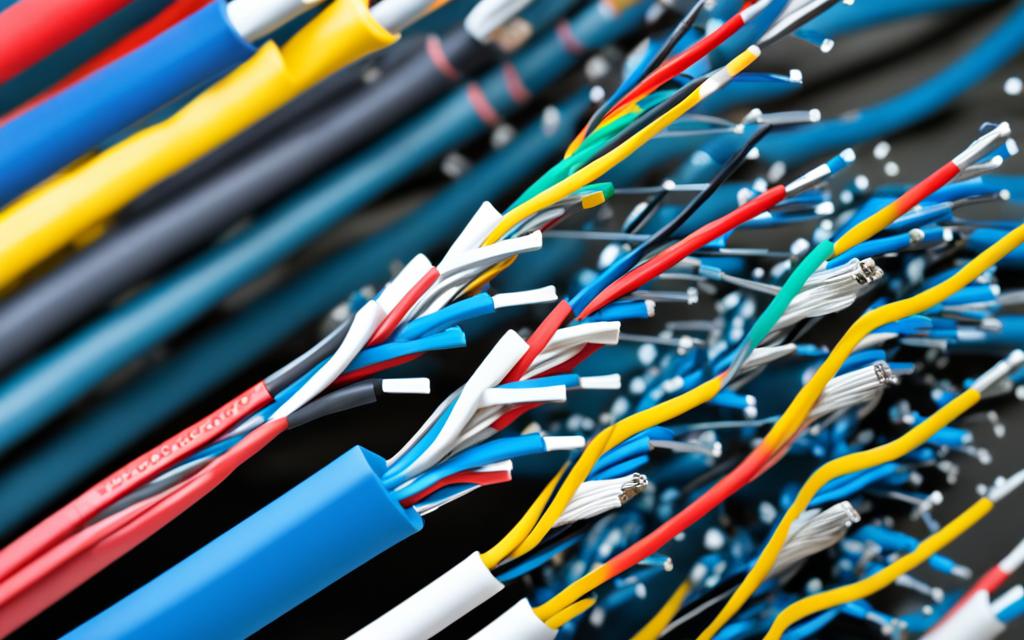
UTP cables offer flexibility, cost-effectiveness, and wide availability, making them a popular choice for many networking needs.
Continue reading to explore the limitations and disadvantages of UTP cables in the next sections of this article.
UTP Cable Disadvantages
Despite their numerous advantages, Unshielded Twisted Pair (UTP) cables are not without their drawbacks. It is crucial to consider these disadvantages when evaluating their suitability for specific networking environments.
Susceptibility to Interference
One significant disadvantage of UTP cables is their susceptibility to electromagnetic interference (EMI) and signal interference. At longer distances or high frequencies, UTP cables are more prone to EMI, which can compromise data transmission quality. This makes UTP cables less ideal for environments with potential interference sources, such as factories or areas near high-voltage equipment.
Attenuation and Signal Loss
Another limitation of UTP cables is attenuation, which refers to the gradual loss of signal strength over long cable runs. As the signal travels through the copper wires of the UTP cable, it encounters resistance, leading to signal degradation over extended distances. This can result in data transmission errors and reduced network performance.
Rigidity and Difficulties in Installation
Higher-category UTP cables may exhibit increased rigidity due to the presence of internal plastic rodding. This rigidity can make them less flexible and more challenging to work with during cable installation and routing. It may require additional precautions and effort to ensure proper cable management and avoid damage to the cable or other network components.
To summarize, UTP cables have some notable disadvantages, including their susceptibility to interference, potential signal attenuation, and increased rigidity in higher-category cables. While UTP cables offer numerous advantages, these limitations make it crucial to carefully assess the networking environment and consider alternative solutions, such as Shielded Twisted Pair (STP) cables, in situations where the disadvantages of UTP cables pose significant challenges.
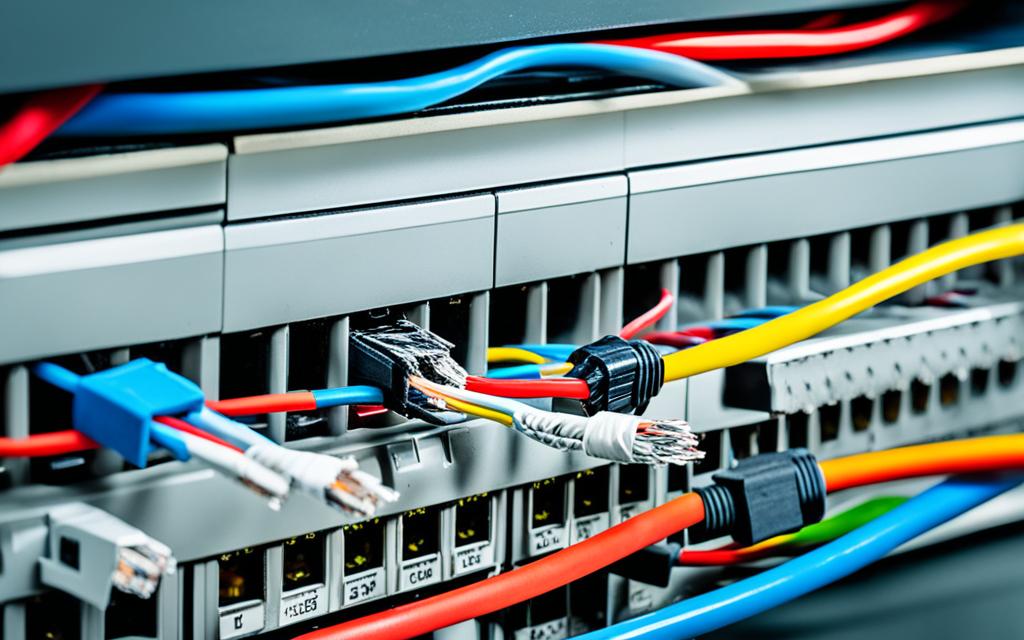
| Disadvantages | Solutions/Considerations |
|---|---|
| Susceptibility to Interference | Consider using STP cables in environments with potential interference sources. |
| Attenuation and Signal Loss | Employ signal boosters or repeaters to mitigate signal degradation over long distances. |
| Rigidity and Difficulties in Installation | Plan cable management carefully and use appropriate techniques for routing and installation. |
What are Shielded Twisted Pair (STP) Cables?
Shielded Twisted Pair (STP) cables are designed with an additional layer of shielding to minimize electromagnetic interference (EMI) and crosstalk, ensuring high-quality signal transmission in networking environments. Unlike Unshielded Twisted Pair (UTP) cables, which rely solely on the twisted pair design to mitigate interference, STP cables provide enhanced protection against external disturbances.
The shielding in STP cables helps to reduce the impact of electromagnetic radiation emitted by nearby electronic devices, power sources, or electrical systems. This shielding is typically made of materials such as aluminum foil or metalized plastic for foil shielding, or copper mesh or braids for braided shielding. These shielding types effectively create a barrier that blocks or absorbs the interference and prevents it from affecting the performance of the cables.
STP cables offer several advantages in terms of electromagnetic interference protection, sustained high frequencies over longer distances, and reduced crosstalk between cables. The improved shielding in STP cables makes them suitable for installations in environments with higher levels of electromagnetic interference, such as industrial settings or areas near power lines or heavy machinery.
Advantages of Shielded Twisted Pair (STP) Cables:
- Electromagnetic Interference Protection: The additional shielding in STP cables helps to minimize the impact of external interference sources, ensuring reliable signal transmission and network performance.
- Sustained High Frequencies: STP cables are capable of sustaining high-frequency signals over longer distances, making them ideal for applications that require stable and high-speed data transmission.
- Reduced Crosstalk: The shielding in STP cables helps to reduce crosstalk between cables in bundled configurations, leading to improved signal quality and overall network performance.
The image above visually represents the concept of Shielded Twisted Pair (STP) cables and emphasizes the importance of shielding in minimizing electromagnetic interference (EMI).
In summary, STP cables offer enhanced protection against electromagnetic interference, sustained high frequencies, and reduced crosstalk, making them suitable for applications where reliable and secure data transmission is critical. The choice between UTP and STP cables depends on the specific requirements of the network environment and the level of interference protection needed.
Making the Choice: UTP or STP?
When it comes to choosing between Unshielded Twisted Pair (UTP) and Shielded Twisted Pair (STP) cables, several factors need to be considered, including the network environment and the level of interference protection required.
UTP cables offer a cost-effective and flexible solution that is widely available, making them well-suited for typical office networking and home installations. They are ideal for connections that do not require extreme network speeds and have shorter cable runs.
STP cables, on the other hand, provide enhanced protection against interference, making them suitable for high-speed networks, industrial settings, and areas with potential Electromagnetic Interference (EMI) or Radio Frequency Interference (RFI) sources.
The choice between UTP and STP should be based on a thorough evaluation of the network environment, noise sources, required data rates, cable runs, and costs. By assessing these factors, you can make an informed decision that meets your specific needs.
Key considerations when choosing between UTP and STP:
- Network environment: Evaluate the presence of potential interference sources and the susceptibility of the network to EMI or RFI.
- Interference protection: Determine the level of protection required for reliable data transmission.
- Data rates: Consider the speed requirements of the network and ensure the chosen cable can handle the desired data rates.
- Cable runs: Assess the length of the cable runs and any potential signal loss over longer distances.
- Cost: Balance the benefits and costs of UTP and STP cables, keeping in mind the performance needs of the network.
By carefully weighing these factors, you can make an educated choice between UTP and STP cables, ensuring optimal performance and reliability in your network environment.
Conclusion
In conclusion, Unshielded Twisted Pair (UTP) cables play a vital role in networking, especially in telecommunication and data networks. Their cost-effective nature, flexibility, and range of options make them ideal for various performance requirements. UTP cables are commonly used in homes, offices, and other environments where extreme network speeds are not necessary.
However, when it comes to more demanding network environments, Shielded Twisted Pair (STP) cables offer enhanced interference protection. STP cables are preferred in high-speed networks, industrial settings, and areas with potential electromagnetic or radio frequency interference sources.
To make an informed decision between UTP and STP, it is crucial to carefully evaluate the network environment, interference protection needs, and cost considerations. By considering these factors, networking professionals can select the appropriate cable type that best suits their specific requirements.
FAQ
What are the applications of Unshielded Twisted Pair (UTP) cables in networking?
UTP cables are widely used in networking, particularly in data networks and telecommunication systems.
What are the common UTP standards?
The common UTP standards include TIA-568-C.2, ISO/IEC 11801, and EN 50173.
What are Unshielded Twisted Pair (UTP) cables?
UTP cables are constructed with pairs of twisted copper wires wrapped in a plastic insulation sleeve to reduce interference and crosstalk.
What are the advantages of UTP cables?
UTP cables offer advantages such as flexibility, lower cost, and wide availability. They use cost-effective RJ-45 connectors and are commonly used for patch cables, desktop connections, and short LAN runs.
What are the disadvantages of UTP cables?
One major disadvantage is their susceptibility to electromagnetic interference (EMI) and signal interference at longer distances or high frequencies. UTP cables also have limitations in terms of attenuation and may be more rigid in higher-category cables.
What are Shielded Twisted Pair (STP) cables?
STP cables incorporate an additional layer of shielding to reduce electromagnetic interference (EMI) and crosstalk.
How do I choose between UTP and STP cables?
The choice between UTP and STP cables depends on various factors such as the network environment and the need for interference protection. UTP cables are cost-effective and suitable for typical office networking, while STP cables provide better protection against interference and are suitable for high-speed networks and areas with potential EMI or RFI sources.


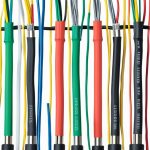









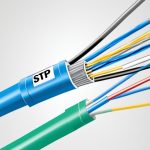
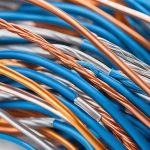
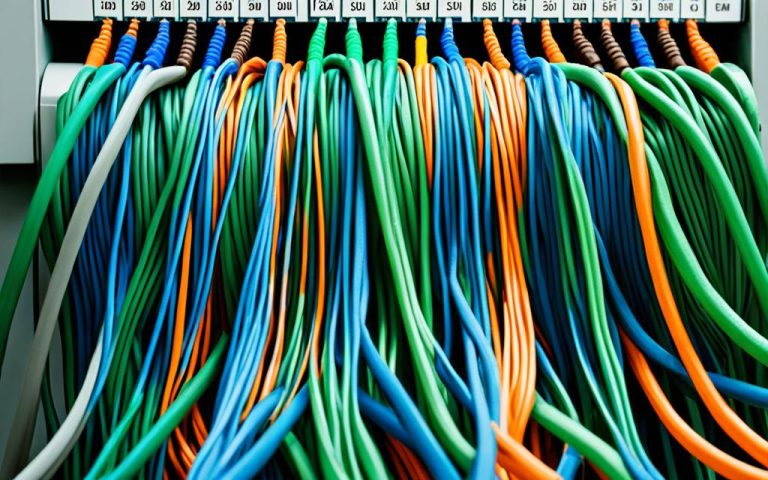

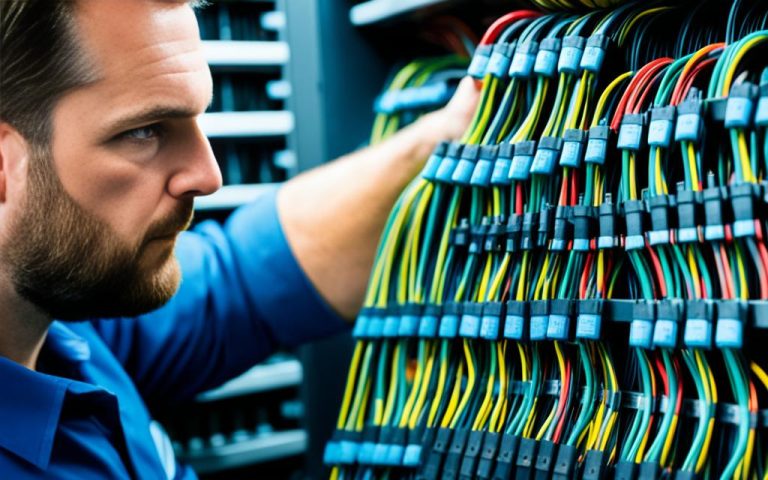
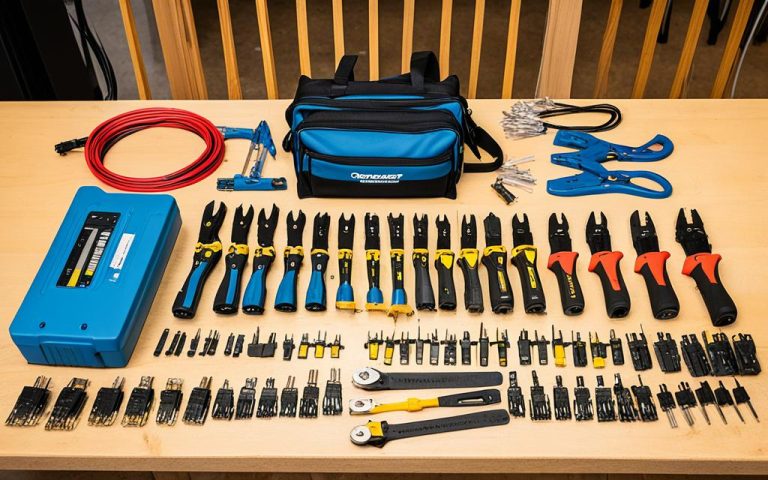
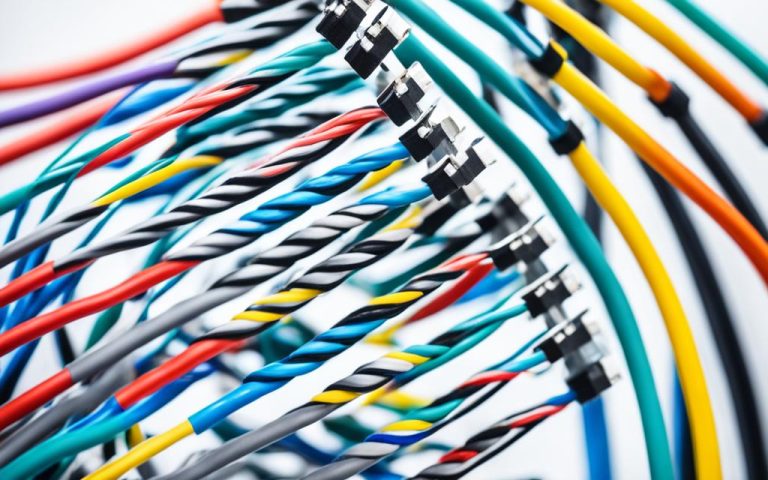

4 Comments